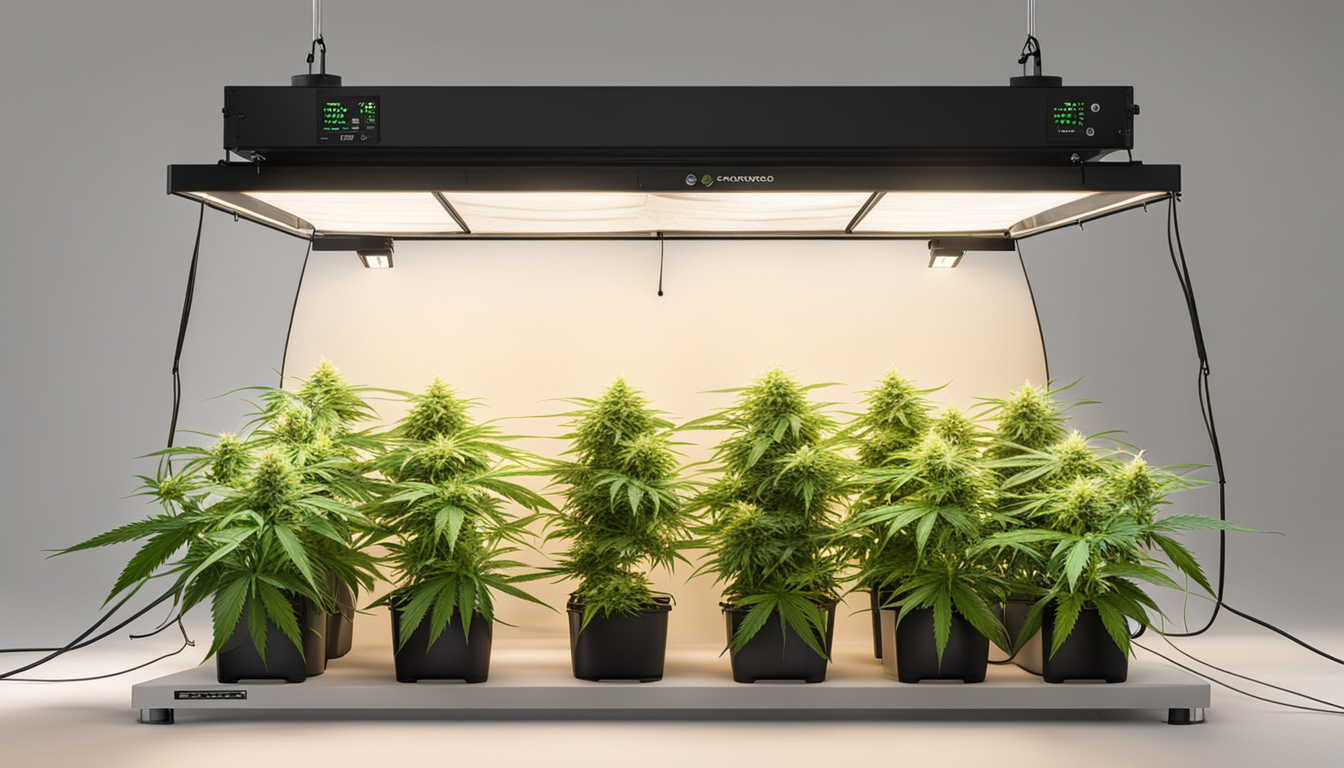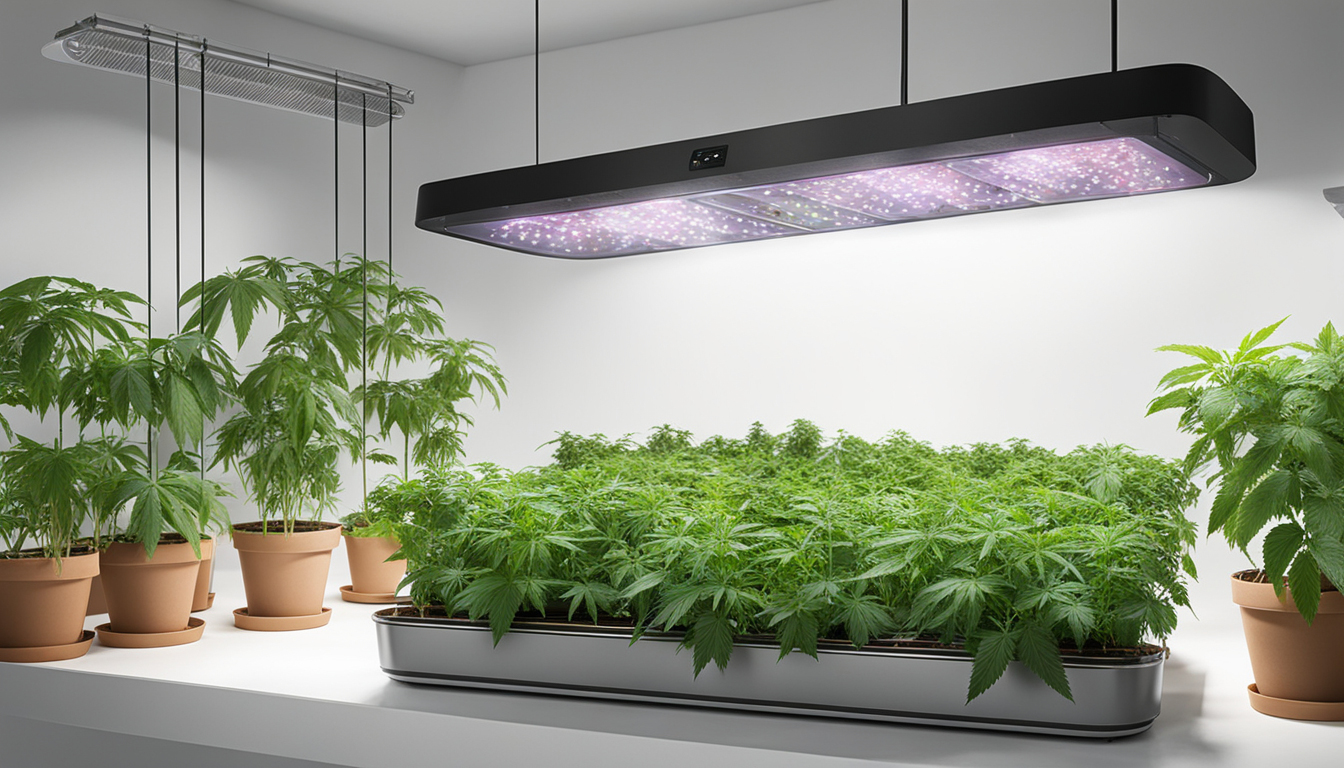Cannabis Growing Guide

Whether you're new to cannabis cultivation or looking to improve your existing harvest, following this complete guide will help you produce bountiful, high-quality yields right at home. With the right supplies, methods, and care, growing cannabis indoors can be an extremely productive and cost-effective endeavor.
Choosing Pot Varieties
The first step in planning your indoor crop is picking the right cannabis cultivars to produce. The three main types of marijuana plants each have their own traits.
Sativas
Known for their uplifting mental effects, sativas grow tall and slender with narrow leaves. They flourish in tropical equatorial climates and have a longer flowering time between 2.5-3 months indoors. Top energizing strains include Sour Diesel, Durban Poison, and Jack Herer.
Relaxing strains
These strains provide relaxing full-body effects and spread short and bushy with broad leaves. Adapted to cooler mountain climates, they bloom faster within 2-2.25 months. Popular indica strains include Northern Lights, Bubba Kush, and Bubba Kush.
Hybrids
Hybrid varieties blend traits from both sativas and relaxing strains. They offer combined effects and have medium blooming periods around 2.25-2.5 months. Popular hybrids are Blue Dream, OG Kush, and Blue Dream.

Setting Up Your Grow Space
Pot plants need the right controlled environment to flourish. Key factors for indoor cultivations are lighting, airflow, layout, and finding the ideal discreet location.
Location
Choose an empty space with easy access to irrigation and electrical outlets. An empty extra bedroom, unused closet, basement corner, or cultivation tent locked away in a garage all make great hidden cultivation room spots.
Lighting
Marijuana requires intense light for all vegetative stages. LEDs are energy-efficient and come in broad spectrum options mimicking natural outdoor light. Cover 250-400 watts per sq. ft for the vegetative stage and 400-600 watts per square foot for flowering.
Airflow
Proper airflow and exhaust systems maintain ideal temp, humidity, and fresh CO2 levels. Set up quiet 4-6 inch blowers or carbon filters to refresh old air and reduce odors.
Layout
Optimize your space by positioning plants strategically under the lamps and allowing room to access and work around them. Set up separate zones for growth, bloom, drying, and propagation.

Growing Mediums
Weed can be grown in various substrates, each with benefits and cons. Pick a appropriate option for your specific setup and growing style.
Soil
The classic medium, soil is cheap and simple for new growers. It provides excellent taste but needs more irrigation and fertilizing to nourish plants. Amend soil with perlite or coco to improve drainage.
Coco Coir
Made from coconut husks, reusable coco coir retains water but still lets in air to the roots. It's more sterile and more consistent than soil. Use coir-specific fertilizers to prevent accumulation.
Water systems
In water systems, plant roots develop right in fertilizer irrigation solution. This enables quick development but needs careful observation of solution properties. DWC and irrigation systems are common techniques.
Germinating Seeds
Germination activates your weed seeds to begin sprouting taproots. This prepares them for planting into their growing medium.
Paper Towel Method
Place seeds between damp paper towels and maintain them damp. Inspect after a week for growing radicles showing germination is complete.
Direct Planting
Plant seeds directly into pre-moistened cultivation medium 6mm deep. Gently water and wait 7-14 days until sprouts push through the surface.
Rockwool Cubes
Presoak cubic rockwool starters in pH-adjusted water. Place seeds 6mm deep into the cubes. Keep cubes wet until seedlings emerge within 1-14 days.
Transplanting Young plants
Once germinated, marijuana young plants need to be transplanted to avoid overcrowding. Move them into proper sized pots.
Ready Containers
Load large containers with growing medium amended with slow-release nutrients. Let pots to absorb water overnight before transplanting.
Gently repotting
Carefully loosen seedling roots from germination medium using a spade. Put into prepared container at same depth as before and gently water in.
Growth Stage
The vegetative stage promotes foliage and plant form through 18-24 hours of daily light exposure. This stage usually lasts 1-2 months.
Using 18-24 Hours of Light
Use lamps on a 24 daily cycle or natural sunlight to initiate nonstop photosynthesis. Light output influences height and internodal spacing.
Nutrients
Use grow stage nutrients higher in N. Make sure pH remains around 6.5 for full fertilizer absorption. Feed 25-50% strength after 2 weeks and increase slowly.
Training Techniques
Topping, LST, and scrogging manipulate shoot patterns for even foliage. This increases yields.

Bloom Stage
The flowering stage grows buds as plants show their sex under a 12 hour light schedule. It lasts 2-3 months depending on variety.
Changing Light Schedule
Change grow lights to 12/12 or move outside for natural 12/12 timing. This signals plants to begin flowering.
Flushing
Leaching removes fertilizer residuals to improve flavor. Fertilize weakly the first period then just use plain water the last 2 weeks.
Flushing
Maintain 12/12 light timing but leach using pH-balanced water only. Return to clean watering if buds aren't ripe after two weeks.
Harvesting
Knowing when pot is fully ripe delivers peak cannabinoid content and aroma. Cut down plants at optimal maturity.
Signs of readiness
Look for fading pistils, swelling calyxes, and 10-15% cloudy trichs. Inspect buds across the plant as they won't all mature evenly.
Cutting Plants
Use sterilized, razor-sharp trimming scissors to carefully slice each plant at the base. Keep several inches of stem attached.
Curing
Hang whole plants or colas inverted in a dark room with average temp and humidity around 50-60% for 1-2 weeks.
Aging
Curing continues desiccating while improving the buds like fine wine. This process mellows Discover More harshness and further develops terpene and terpene profiles.
Curing containers
Manicure cured buds from stems and place into sealed containers, packing about 3⁄4 full. Use a hygrometer to monitor container humidity.
Burping Daily
Unseal containers for a few hours daily to slowly reduce moisture. Remoisten buds if humidity drops below 55%.
Long term storage
After 14-21 days when humidity stabilizes around 55-65%, do a last manicure and store long-term in sealed jars.
Troubleshooting
Even experienced growers run into various marijuana plant problems. Detect issues early and address them properly to keep a vibrant garden.
Poor feeding
Yellowing leaves often indicate insufficient nitrogen. Purpling stems and leaves signal low phosphorus. Test pH and boost nutrients gradually.
Pests
Spider mites, fungus gnats, mites, and nematodes are frequent pot pests. Use organic sprays, ladybugs, and sticky traps for natural control.
Mold
High humidity promotes botrytis and root rot. Increase airflow and circulation while lowering humidity below 50% during flowering.

Conclusion
With this complete indoor weed cultivation guide, you now have the knowledge to cultivate bountiful strong buds for private harvests. Follow these steps and methods during the germination, vegetative, and flowering stages. Invest in good gear and closely monitor your plants. In time, you'll be rewarded with frosty fragrant buds you raised yourself under the patient guidance of your green thumbs. Happy growing